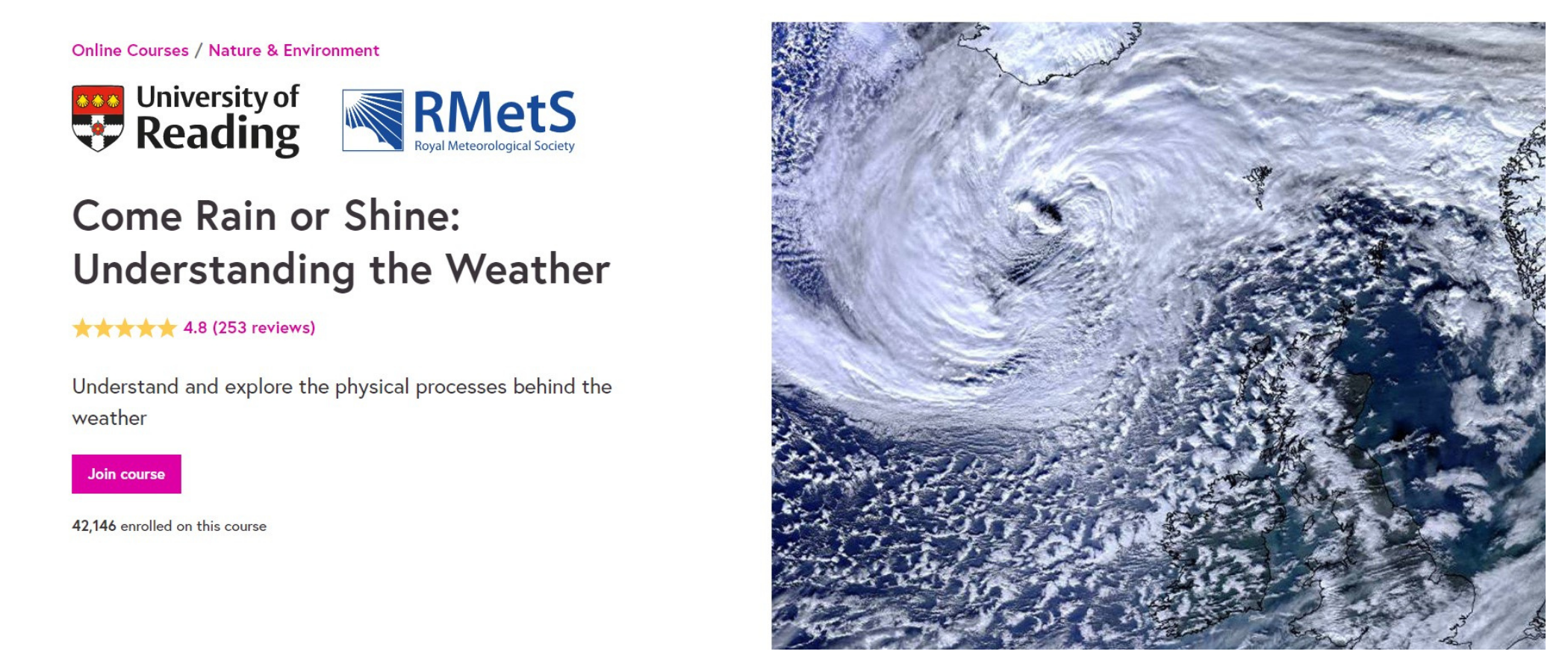

Join expert mentors for Come Rain or Shine
Free to join - award-winning online learning programme
Come Rain or Shine, our FREE to join award-winning online learning programme will shortly be starting its next facilitated period with two expert mentors.
From Monday 16 January to Sunday 26 February, Prof Sylvia Knight, Head of Education for the Royal Meteorological Society and Dr Peter Inness, Associate Professor and lecturer in the Meteorology Department at the University of Reading, will be on hand to help answer questions and support people taking part.
Weather affects our lives almost every day through what we wear, what we eat and what we do. But why is it rainy, windy or sometimes even sunny? Explore some of the physical processes driving UK weather systems and get hands-on in the world of weather with practical activities and fieldwork. Try your hand at predicting whether it will snow and have a go at interpreting weather maps. You’ll also reflect on the processes that affect the Earth’s atmosphere and therefore climate, both natural (volcanoes, orbit) and man-made (greenhouse gases).
Come Rain or Shine: Understanding the Weather is our Continuing Professional Development course developed with the University of Reading. Pitched at an introductory level, it is for anyone interested in learning about the weather. It will be of particular interest to those who are teaching or studying geography at school or considering applying to a meteorology degree.
- Interpret synoptic charts (also known as a weather chart) and use them to describe weather details such as wind speed and direction, precipitation and cloud cover.
- Explore depressions and discover why they are so significant in mid-latitude locations such as the UK
- Investigate the physical processes behind weather, such as warm air rising, cloud formation and the Coriolis effect, with experiments you can do at home.
- Record your local weather conditions and share your findings.
- Reflect on the processes that affect the Earth’s atmosphere and climate, both natural (volcanoes, orbit) and human-induced (greenhouse gases).
- Apply your understanding of mid-latitude weather systems to analyse weather data and images.
The course is part of the Society’s support for teachers and schools. More information about our other activities can be found on the Society’s education website MetLink.
“As a Geography teacher, this course was great at explaining many of the aspects of the weather I have to teach. It reinforced in a very clear way what I already knew and added a lot of new information. Thank you.” – Paul Pickard
“Thank you so much. I have learned and revised my knowledge of this topic and have so many useful resources to use when back teaching students. Excellent course.” – Joanna Perkins-Taylor
For further course reviews, visit the FutureLearn page here.

